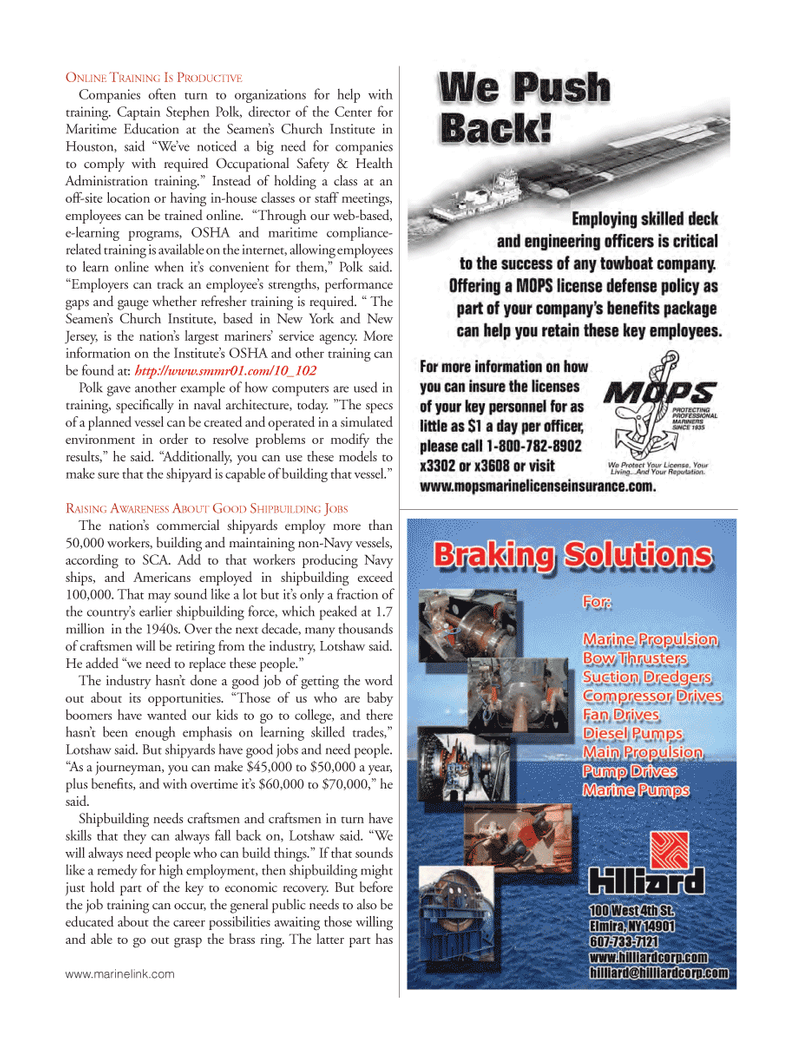
Page 41: of Marine News Magazine (July 2012)
Propulsion Technology
Read this page in Pdf, Flash or Html5 edition of July 2012 Marine News Magazine
ONLINE TRAINING IS PRODUCTIVE Companies often turn to organizations for help with training. Captain Stephen Polk, director of the Center for Maritime Education at the Seamen?s Church Institute in Houston, said ?We?ve noticed a big need for companies to comply with required Occupational Safety & Health Administration training.? Instead of holding a class at an off-site location or having in-house classes or staff meetings, employees can be trained online. ?Through our web-based, e-learning programs, OSHA and maritime compliance- related training is available on the internet, allowing employees to learn online when it?s convenient for them,? Polk said. ?Employers can track an employee?s strengths, performance gaps and gauge whether refresher training is required. ? The Seamen?s Church Institute, based in New York and New Jersey, is the nation?s largest mariners? service agency. More information on the Institute?s OSHA and other training can be found at: http://www.smmr01.com/10_102 Polk gave another example of how computers are used in training, speci cally in naval architecture, today. ?The specs of a planned vessel can be created and operated in a simulated environment in order to resolve problems or modify the results,? he said. ?Additionally, you can use these models to make sure that the shipyard is capable of building that vessel.? RAISING AWARENESS ABOUT GOOD SHIPBUILDING JOBSThe nation?s commercial shipyards employ more than 50,000 workers, building and maintaining non-Navy vessels, according to SCA. Add to that workers producing Navy ships, and Americans employed in shipbuilding exceed 100,000. That may sound like a lot but it?s only a fraction of the country?s earlier shipbuilding force, which peaked at 1.7 million in the 1940s. Over the next decade, many thousands of craftsmen will be retiring from the industry, Lotshaw said. He added ?we need to replace these people.? The industry hasn?t done a good job of getting the word out about its opportunities. ?Those of us who are baby boomers have wanted our kids to go to college, and there hasn?t been enough emphasis on learning skilled trades,? Lotshaw said. But shipyards have good jobs and need people. ?As a journeyman, you can make $45,000 to $50,000 a year, plus bene ts, and with overtime it?s $60,000 to $70,000,? he said. Shipbuilding needs craftsmen and craftsmen in turn have skills that they can always fall back on, Lotshaw said. ?We will always need people who can build things.? If that sounds like a remedy for high employment, then shipbuilding might just hold part of the key to economic recovery. But before the job training can occur, the general public needs to also be educated about the career possibilities awaiting those willing and able to go out grasp the brass ring. The latter part has www.marinelink.com

 40
40

 42
42
